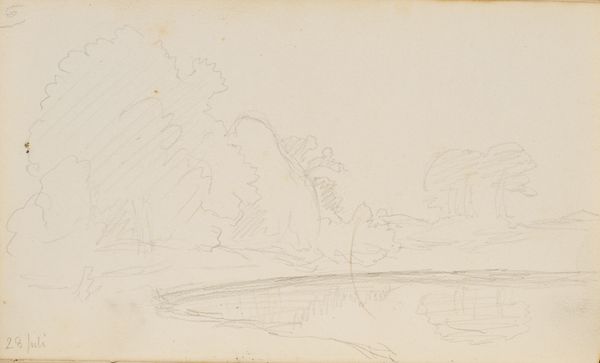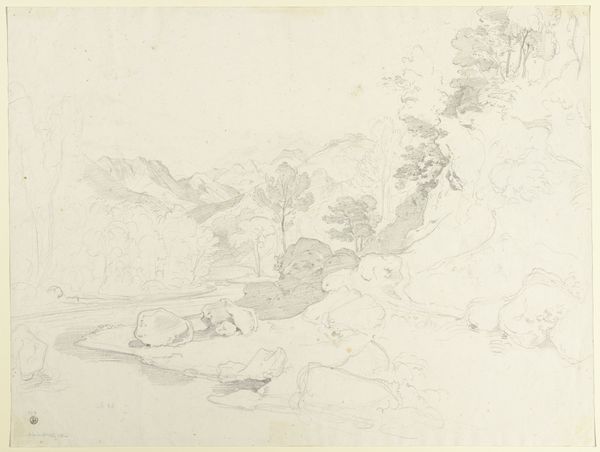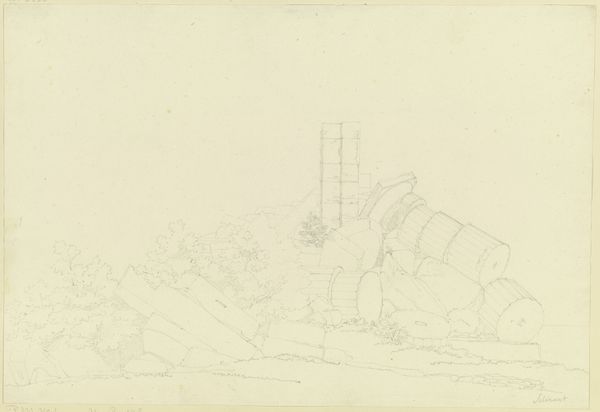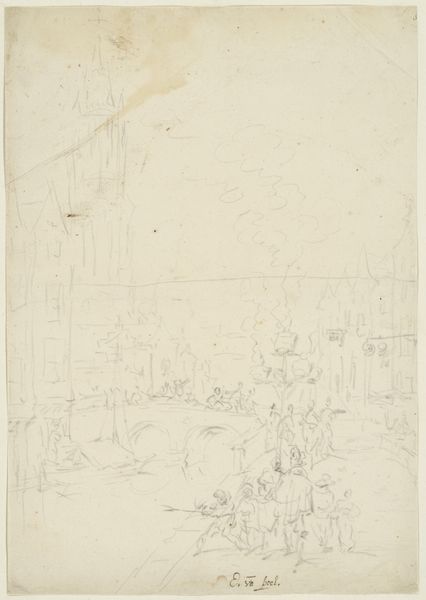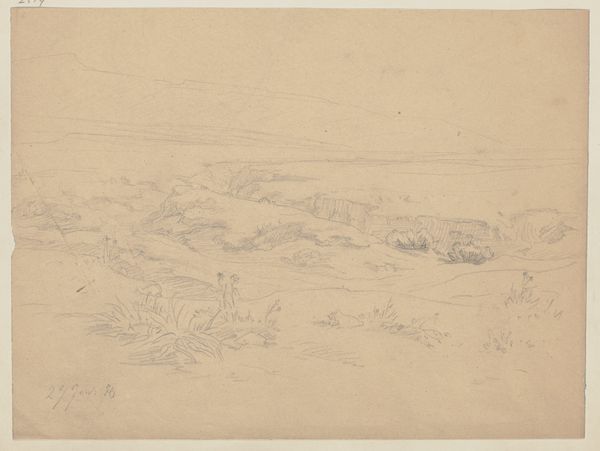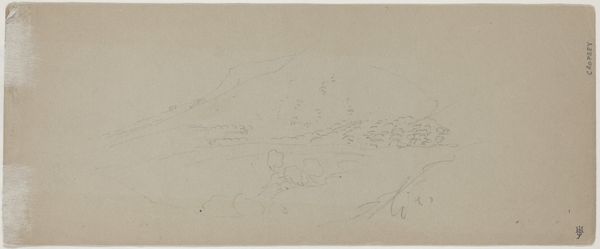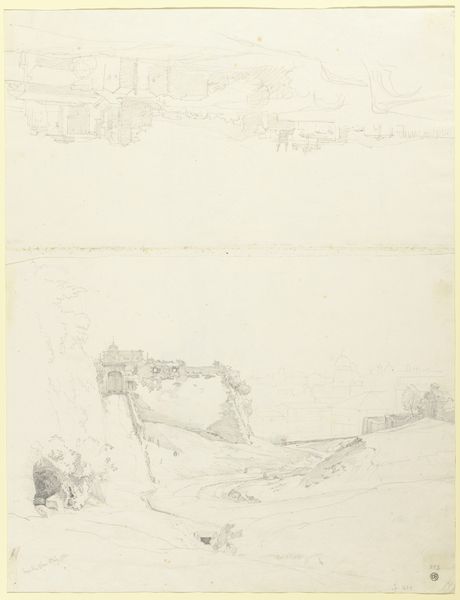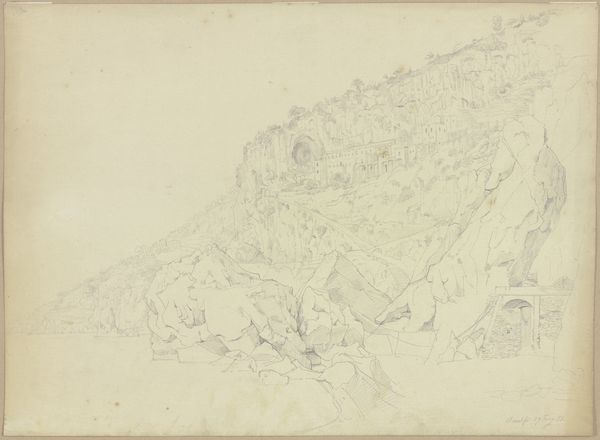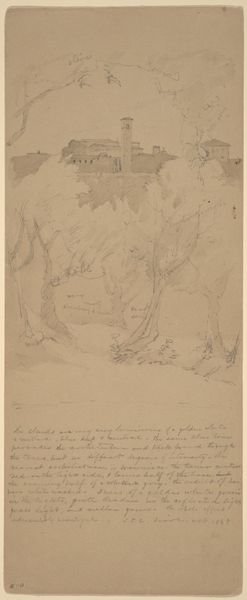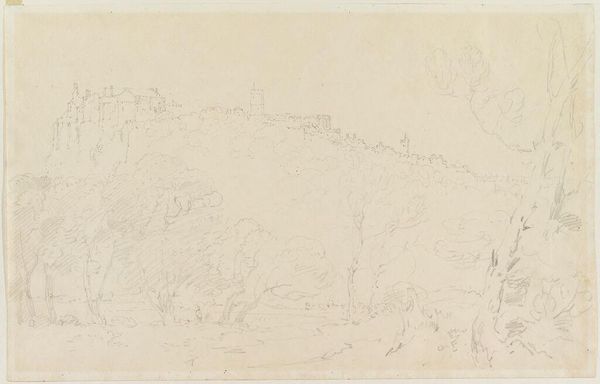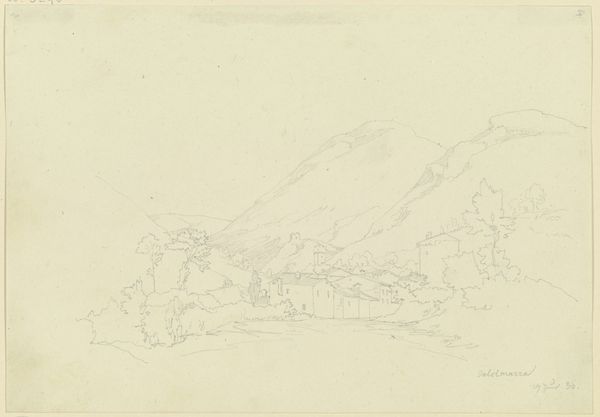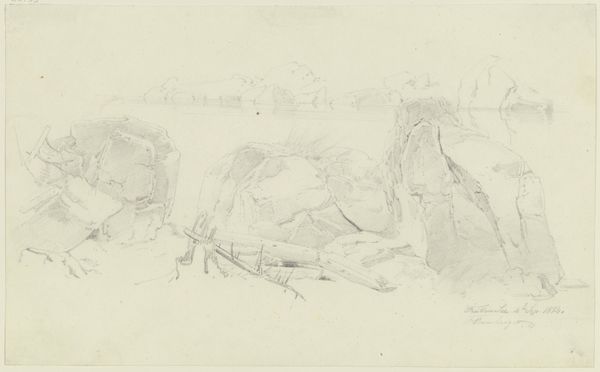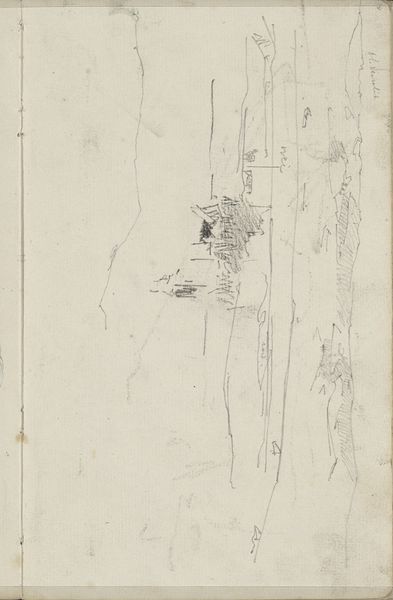
Frau Wenner als Pilgerin in den Ruinen von Burg Königstein (Taunusreise) 1811
0:00
0:00
drawing, pencil
#
portrait
#
drawing
#
16_19th-century
#
pencil sketch
#
landscape
#
german
#
romanticism
#
pencil
Copyright: Public Domain
Curator: This drawing, a pencil sketch executed around 1811, is called "Frau Wenner als Pilgerin in den Ruinen von Burg Königstein (Taunusreise)" by Christian Xeller. Editor: The ruins lend the scene such a somber quality. And the woman… she looks burdened, perhaps even contemplative. It gives the impression of melancholy, doesn't it? Curator: It’s characteristic of the Romantic period, particularly the use of ruins to evoke a sense of loss or reflection on the past. Frau Wenner, depicted as a pilgrim, adopts this role perhaps to mirror or interact with that very sentiment. The pilgrim, across cultures and religions, signifies a spiritual journey. Here it’s made more poignant within these historical remnants. Editor: Interesting that she’s portrayed *as* a pilgrim, not necessarily *being* one. Is the costume deliberate then? Is she acting out a part? Does this give the pilgrimage a performative nature, even hinting at the theatrics of piety during the period? It begs the question of authenticity, doesn't it? Curator: It could indeed be argued that it raises questions of performativity and social roles. However, her pose—the downcast eyes, the leaning on her staff—these resonate with traditional depictions of pilgrimage as a process of inner discovery. The ruins may symbolize societal decay but, to some, could be understood as necessary obstacles toward spiritual elevation. Editor: So the architectural elements serve more than just aesthetic functions, acting also as symbolic checkpoints, of sorts, along the journey? I see how it pulls together both inner struggle and historical decline to speak about the transformation and renewal in individual or social spheres. Curator: Precisely. And recall that Romanticism often juxtaposes natural grandeur and human insignificance. Editor: That is so thought-provoking; now I view her pilgrimage through this scene with even more dimensions of thought! Curator: It offers so many opportunities for symbolic interpretation, doesn’t it? Editor: Definitely a work that benefits from closer inspection—both visually and conceptually.
Comments
No comments
Be the first to comment and join the conversation on the ultimate creative platform.
